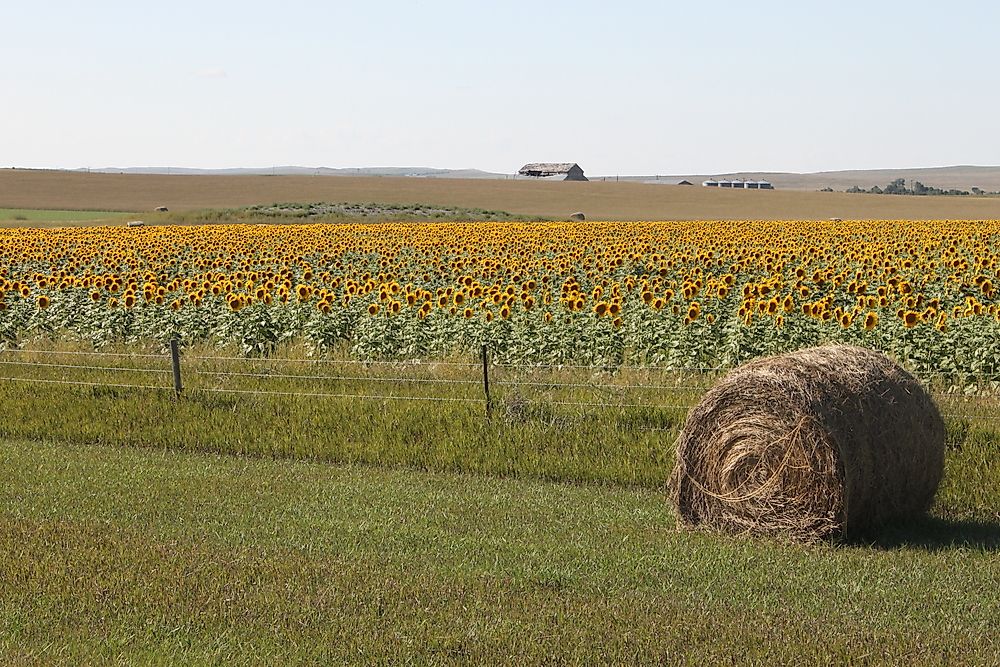What Are The Biggest Industries In South Dakota?

South Dakota is the fourth-smallest state by GDP with an output of roughly $52 billion according to the BEA. As of 2018, the per capita income was estimated at $56,521, while 13% of the population lived below the poverty line. Over the past decade, the economy of South Dakota has grown slowly compared to the neighboring states such as Montana and Minnesota, mainly due to the decline of the farm economy. Here an overview of the major economic activites in South Dakota.
Agriculture, Fishing and Forestry
South Dakota is a large-scale producer of corn, alfalfa, soybeans, rye, flaxseed, and wheat. Since the 1980s, the number of agricultural fields have decreased while the size of an average farm has tripled. The northern region of the state focuses on crop production, especially corn and wheat, while the southern has a diversified agricultural economy that includes livestock rearing. Indeed, since the 1900s South Dakotans have been among the leading cattle rearers in the country while producing high-quality wool. In the late 19th century, the government licensed part of the Black Hills Forest Reserve to sawmillers to cater to the rising demand for timber. Small-scale fishing is done at lakes and reservoirs created by the Missouri River and several streams.
Mining and Power
The mining industry in South Dakota produces gold, cement, gravel, and sand. The Homestake Mine at the Black Hills was the primary gold mine until it was shut down in 2001, but several other mines continue to operate. Several dams along the Missouri River are used to produce hydroelectric power though the state continues to rely on coal and oil-fueled power plants.
Manufacturing
South Dakota manufacture wood products, foodstuff, electronics, computers, and light machinery. Dairy and meat processing plants located in Sioux Falls while baking and flour milling firms are found throughout the state.
Services and Labour
The service sector employs much of the state's labor force. In the late 20th and early 21st centuries, the economic value of the tourism sector was comparable to that of Agriculture but has since declined. Mount Rushmore and the Crazy Horse Memorial are the main tourist attractions. At the beginning of the century, the state reported some of the lowest unemployment rates thanks to the many banks, health care centers, insurance agencies, and other service providers. The state collects billions of dollars in sales tax, license fees, and income from tourist facilities.
Transportation
The Missouri River was the primary medium of transport until the late 19th century when steamboats were replaced by rail. The construction of modern roads and highways began in the 1900s, and since then the state and federal governments have constructed thousands of miles of paved roads. In the 1920s several bridges were built over the Missouri River. Many airports and airstrips provide a faster mode of transport to the outside world.











